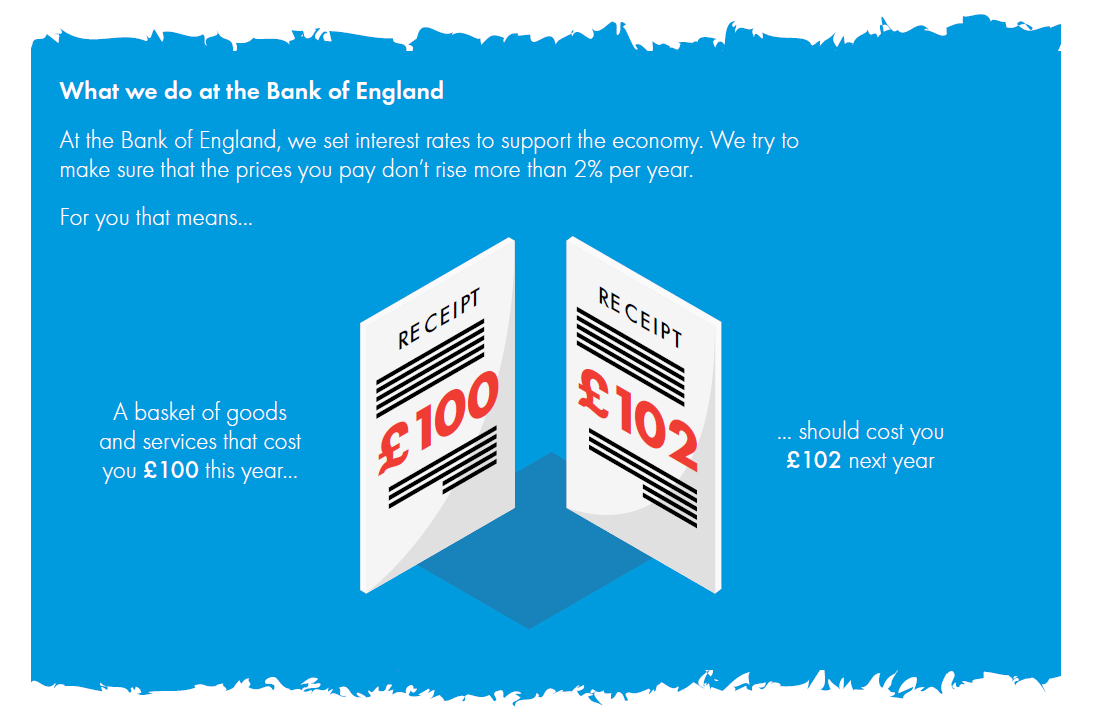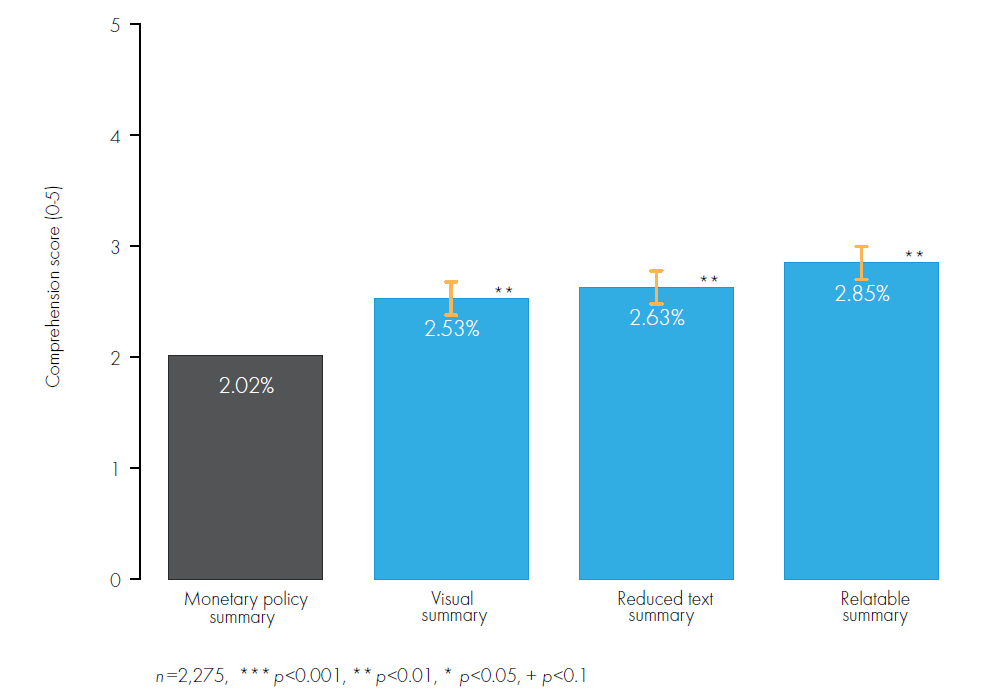Central banks’ inflation targets are more likely to be effective if they are widely understood and credible. But only around a quarter of the public can typically identify the correct range for current inflation, even when given a small number of options to choose from. Poor comprehension of economic policy and low trust in economic institutions risks undermining economic stability and leading consumers and firms to make poor financial decisions.
We partnered with the Bank of England to test how to improve comprehension of the Bank’s quarterly Inflation Report. We used an online experiment to test four versions of the report with members of the public. The most successful was what we called a ‘Relatable Summary’ (Figure 1), which restructured the information to make it clearer why the Bank took the decision it did; and made the content more ‘relatable’ to day-to-day lives, for instance explaining what a two per cent inflation rate means for the cost of a basket of goods next year.
Figure 1: An extract from the ‘Relatable Summary’

This summary improved comprehension scores by over 40 per cent compared with the Bank’s traditional monetary policy summary, and by 13 per cent compared with the Bank’s existing Visual Summary (Figure 2). The Relatable Summary also improved participants’ rating of the information for trustworthiness compared to the more traditional summary, and was the most effective at improving perceptions of the Bank.
Central banks are increasingly viewing communication as an important policy lever in its own right. Our work demonstrates the value of taking an experimental approach to central bank communications, allowing institutions to test what works before rolling out more widely. More broadly, we see this work as an early step towards better integrating behavioural insights into monetary and macroeconomic policy.
Figure 2: Testing public understanding of economics





